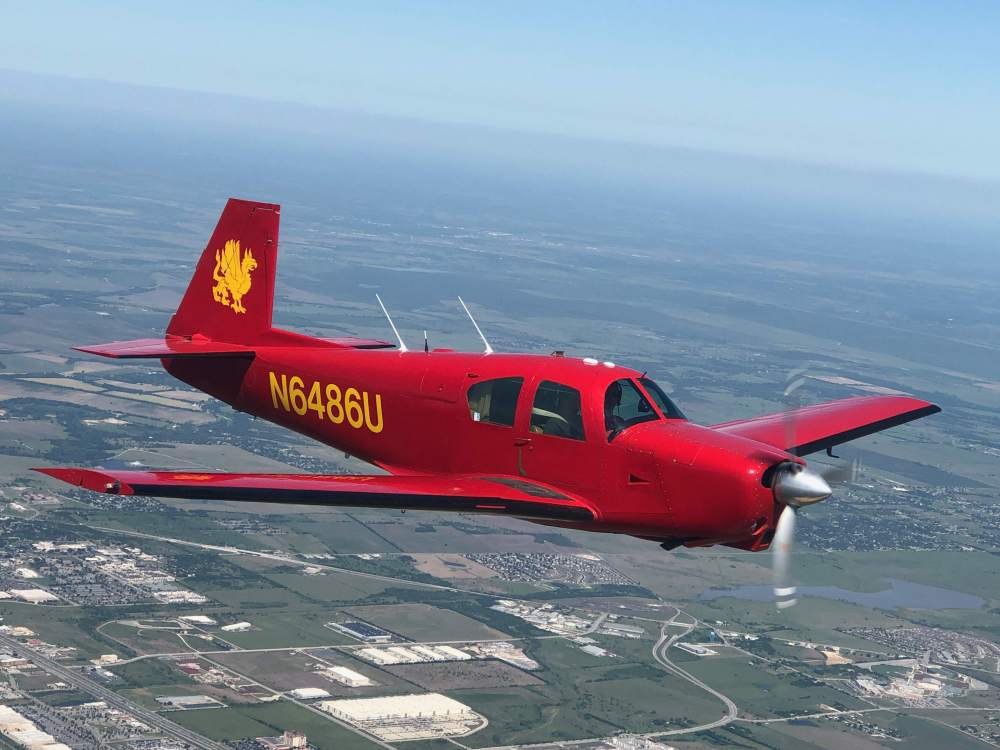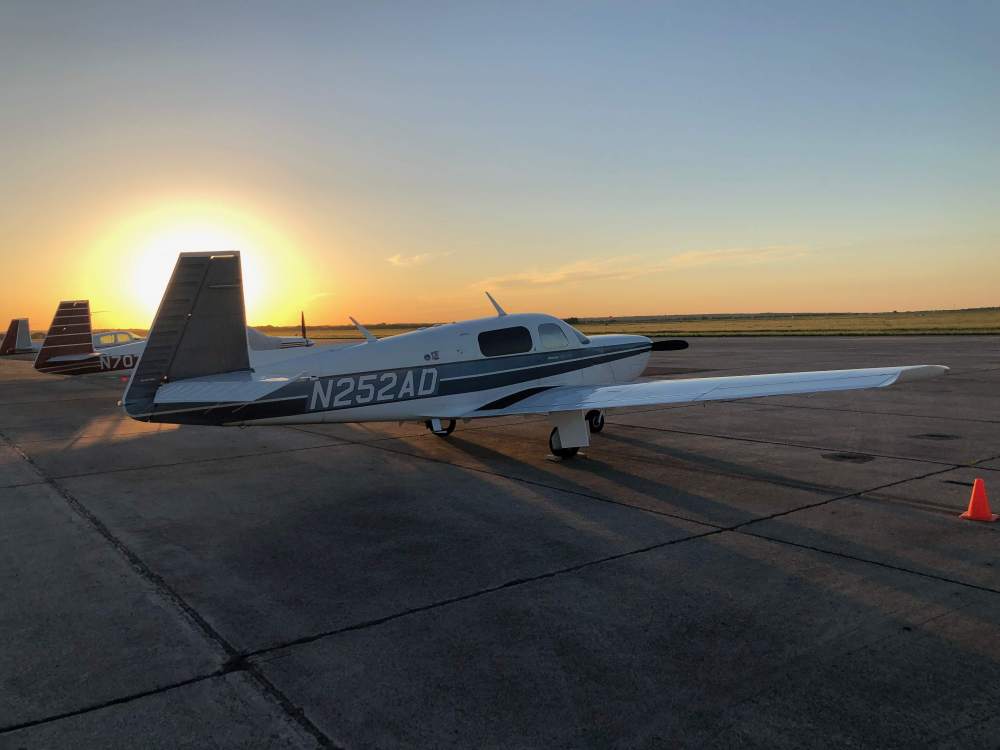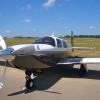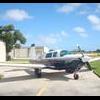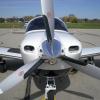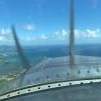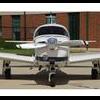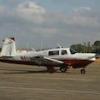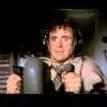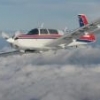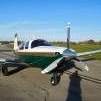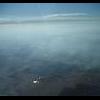Leaderboard
Popular Content
Showing content with the highest reputation on 04/28/2019 in all areas
-
Before he died, Gordon Baxter had a great story about this concept. When he was interviewing Al Mooney in preparation for writing The Al Mooney Story, Al sketched the tail of the M18 and M20 at high angles of attack. The important concept wasn't so much the leading edge of the stabilizer, but the swept forward hinge line of the control surface. As Skip described, the swept tail is largely wasted because what's important is the perpendicular component of the relative wind. Gordon said that Al sketched something like this:4 points
-
Last I heard, only one Odyssey battery is PMAed, and it requires a new battery box, STC, and field approval. The Concorde is a great battery, lasts a long time, and just drops in with a logbook entry.3 points
-
Landing is easy- every flight is guaranteed to land. Not dying while trying requires some skill.3 points
-
3 points
-
I thought I'd resurrect this old thread because the original question gets to the core of a misunderstanding about the Mooney tail feathers that I see on MS from time to time. It turns out that a vertical stabilizer with a vertical leading edge is more effective than one with a swept back leading edge, and this allows it to be of smaller area which in turn reduces the weight and drag. The Mooney tail design wasn't greatly different from other airplanes back when Al designed it - just a bit more angular. It wasn't until around 1960 I believe that Cessna started the swept fin craze making the Mooney tail appear backwards. The interesting question is why is the vertical leading edge design more efficient? I has to do with the angle that the relative wind flows with respect to the chord line of a wing (aerodynamically, the vertical stabilizer is a vertically mounted wing with a symmetrical airfoil). The cord line is perpendicular to the leading edge of a wing. In the case of a vertical leading edge, the relative wind flows parallel to the chord line. This airflow produces the necessary aerodynamic side force ("lift" - think Bernoulli, Newton) whenever a yaw creates an angle of attack. Now consider the swept back leading edge. The chord line is still perpendicular to the leading edge, but the relative wind is now at an angle to the chord line. Some of the relative wind will flow parallel to the chord line and some will flow spanwise. The spanwise component is "wasted" in the sense that it doesn't produce any aerodynamic force. So, the useful component of the relative wind is lessened. Aerodynamic force is a function of airspeed, angle of attack and area. To achieve the same aerodynamic force at the same airspeed and angle of attack, the swept tail will need to be larger than the straight tail. Drag is also a function of area, so as the area increases, so will the drag. I believe that Bill Wheat said in Boots on the Ground that Al calculated that a swept tail would need to be about 20% larger. So, if the swept tails are just for show on small planes, why do jets have them? Jets fly fast and recall that the air flowing over a wing accelerates. When the airspeed of this accelerated air gets close to the speed of sound, the drag goes way up. The rapidly increasing wave drag as the aircraft approaches the speed of sound is why it used to be caused the "sound barrier". By applying sweep, the wing sees reduced airspeed of the component of relative wind along the chord line, and this reduces the drag. Sweep is applied to all the airplane's "wings" (wing, horizontal and vertical stabilizers) for this reason. Skip3 points
-
All, my mission is changing and I have decided to sell my company plane. It is listed through All American Aircraft. Contact Jimmy Garrison for more info. It will go on Controller in a week or so but this is a Facebook posting from AllAmerican... This one is just too nice not to take a peek at. One of the most meticulous owners I have ever met (keeps the plane on jacks in his hangar to preserve the shock disc elasticity) and maintained by arguably the most meticulous mechanic in the Mooney world (Brian Kendrick - former director of maintenance at Mooney). No expense spared. Corporate ownership with an open checkbook. 2005 Mooney Ovation G-1000, WAAS Equipped. ADS-B Equipped. Air Conditioned. Excellent P and I. 4-Blade MT Prop (First I have seen on an Ovation - smooth and quiet). 310hp Upgraded - Climbs like a Rocketship combined with the 4-blade. AOA with heads up display (HUD). Glass backups to G-1000. Oxygen. LED Landing/Taxi/Strobe/Beacon Lights. <1100 hours $279,000 Jimmy Garrison Office 830-438-4081 Cell 210-872-1110 Sent from my iPhone using Tapatalk2 points
-
They’d be just fine. GA only accounts for ~8% of their bottom line. Source: their last 10Q2 points
-
That’s emapa.aero in San Marcos TX saying that if you buy the kit from them, then Blue Skies Aviation in San Marcos has to do the install. You can but the kit directly from Monroy Aerospace. Contact info is at Monroyaero.com. Many shops all over the world can do this install.2 points
-
I remember that the belly panels and prop were from a gear up landing Sent from my iPhone using Tapatalk2 points
-
Completed SkyBeacon installation and passed validation flight on the Mooney Rocket. When we configured the SB from the iPhone, the transponder sqwak code would not show up no matter threshold. uAvionics support said ignore, set to 34% and go do validation flight. It passed. So this could be an issue with the app, but the bottom line is it works. See pic attached the wingtip lens slot we cut leaves a small gap behind the SB antenna which will be covered with a piece of plexiglas using the available screw hole and nutplate + caulk around antenna. Total cost: SkyBeacon $1,849 4 hours @ $85 = $340 (he's a bit slow) Minus: $500 FAA rebate TOTAL $1,6892 points
-
Right or wrong, that’s the explanation I am familiar with. It gives the most rudder effect per square foot. Sent from my iPad using Tapatalk2 points
-
2 points
-
I know, but the 301 didn't look like it would cost 2 million!2 points
-
Okay, so I've been putting off repairing the infamous "stuck roof vent" problem that's plagued my C model since the upholstery was redone. It's been stuck in the open position for at least 4 years and I've just been putting it off. Well, I finally decided to take the project so I set aside a full day of wrangling headliners and trim parts and finding the necessary hardware to repair whatever I found to be froze up. I rounded up all the tools I thought I might need, put some music on the stereo, and had a yeti mug full of ice water and started at what was to be a while of sweating in my cockpit. I started by beginning to remove the trim that surrounds the front overhead vents and cockpit lights along with the vent control knob. I removed the 4 small screws that hold it in place and inserted the small allen wrench to remove the vent knob. I decided to just try to move the knob a bit to get to an easy position to loosen the allen nut when, much to my amazement, it rotated freely and the roof vent closed completely. I repeated opening and closing it several times with a stupid grin on my face. As it turned out the back left screw was about 1/8" too long and was engaging the gears of the vent mechanism and had locked it in place. Total hardware needed to repair vent-shorter screw. Time of repair-15 minutes. Sometimes I'd rather be lucky than good. Don1 point
-
Russ that beautiful R should go quickly, good luck with your new choice1 point
-
Valid point but PC's are a consumer item whereas avionics are limited production specialty items. Almost all consumer goods and services go down in price over time. I recently came across a 1967 ad for TWA touting its JFK to LAX service. Cost of that 707 coach ticket was the equivalent of $1,575 today. Like Jerry just said, time was we were looking to fill our panel with every Silver Crown gizmo available. King couldn't come out with them fast enough.1 point
-
1 point
-
I found an ad from 1982 for the King KNS 80. At the time it sold for $8,575, which adjusted for inflation is $21,885.00 in today's dollars. A GTN 750 costs less than that.1 point
-
Hi all. My plane has been in the shop for the annual and CiES senders and I have been working my tail off, so have not been here much. %HP when LOP is fuel flow in GPH x 13.7 divided by rated HP (210 for the 231). Everyone should know that by now. The JPI uses that formula when LOP, or at least that is the way it appears to me. I saw some posts wondering how you know you are actually LOP. Using the JPI’s you can’t start on the rich side, pull everything over to the LOP side, and expect to have a good “degrees lean of peak” reading because in the 231 too many things are moving around. In the aircraft that control MP so it is constant when fuel flow is reduced that is possible, but in the 231 a change to MP changes fuel flow and vice versa, so by the time you get from the ROP side to the LOP side everything has changed and the peak reading you got is no longer valid. The one way to do it and get a decent number is to get the engine running on the LOP side for sure, say 10 GPH and 32-34”, and then use the JPI in Rich of Peak leaning mode to enrich to peak and back. Rich of Peak mode does not actually know whether you are rich or lean of peak. It is JPI’s way of determining peak by measuring the first cylinder to peak, and if you are already on the lean side and enriching back to peak, that is what you want. Then when you lean back again, you are measuring degrees from peak by the cylinder that is closest to peak, making sure all the rest are further away. This is still not perfect, because as I said, when you make a change to fuel flow or MP in the 231, it changes other things. But it is reasonably accurate. Once you are confident you know what a good LOP setting is, then just use MP and FF to make it again the next time, its simpler.1 point
-
That hose is older than dirt...I would replace it. I bet it breaks apart when you remove it. Sent from my iPad using Tapatalk1 point
-
Looks like my 65C had the same aluminum for using sheet metal screws to hold the side paneling on... I don’t remember any plastic protected adel clamps there though... Best regards, -a-1 point
-
Some owners have upgraded to the single belly pan after a gear up. They can then move the antenna under the single piece belly. I think you mentioned the one piece belly being made of metal. That is not the Lasar belly. Their belly skin is fiberglass. As for the radios. If you are in an area served by VOR and ILS approaches, you should be able to get by for IFR. More and more VOR approaches are being discontinued and this was one of the reasons I upgraded to a GPS. And even that upgrade has helped since my airport was still served by a VOR and I was hoping that the VOR would still be available until the GPS approaches are released for December. Here was the surprise that happened last month: Sent from my iPad using Tapatalk Pro1 point
-
Deleted my response. I will have to find somewhere to write "I will not feed the troll" a hundred times or so. .1 point
-
Well I went ahead and ordered the FAA documentation on the aircraft and have been doing some digging. As per the FAA records this is what has been listed that is currently still on the E. - O&N bladders - LASAR smooth belly 129B - LASAR 103A & 103B, brake relocation and wheel well liners - Hartzell 3 blade topprop - InterAV 50A alternator - Mooney retrofit 1 piece windshield, as per drawing 940022 - Flap gap fairing kit - KMA24, KX155 (X2), KR86, KI208, KI209, KN62 (As long as everything is operational, would this be a doable IFR platform or would more be needed? I know GPS is the ticket but until this thing gets that upgrade would everything be sufficient?) - Nose gear truss was replaced due to dents in the original. PN 540004-501 circa 1988 If anyone just likes to read through FAA documentation I do have it saved and could send it but this is the jist of it all. @carusoam, After looking at it and other Mooneys of the same vintage I do believe that the doubler just above the windshield was from an old antenna. Once I get back home and get the @creekratjr HS graduation out of the way I'm going to see if I can meet up with the current owner and start to scour the logbooks. Will probably just take pictures of everything so I can look them over at my leisure. Oh and by the way, @creekratjr soloed this past week!!! Super proud of him and it looks like he may be on course to have his PPL before he turns 18 in July!1 point
-
Trolling, trolling, trolling. Keep them chickens trolling, RAWHIDE! *crack*1 point
-
1 point
-
So an update if anyone cares! lol. I have 150hrs in my Mooney, I’m ready to take the written. Took a pilot buddy up for a mock check ride, he thinks I’m ready. I feel ready! Hopefully I won’t fail the written, I really suck at remembering acronyms! And the practice tests, well let’s just say WTF! Asking the same questions in a multitude of different ways just to trip you up! I fly everyday to stay sharp and be completely comfortable in different situations. On to the testing!1 point
-
I Garminized my road bike recently. I progressed from a 305 to 705 to the 1030. My bike has a Shimano Di2 on it and the Garmin is able to read battery level and has a number of other features that can be programmed. Ride from this afternoon. It is showing the position of my front and rear chain position. No more looking down. Sent from my iPhone using Tapatalk Pro1 point
-
A local alternator shop can repair that post for 30$. Thats a fairly standard part.1 point
-
arghhh you'll walk the plank and be keel hauled for that.1 point
-
Who did the reseal in 2011 and where is it leaking? Mine were stripped and resealed in 2012 before I bought the plane by Wetwingologists. The LH was great but the RH would leak if I put more than 20 gallons in it. Wetwingologists would fix it under warranty (even though expired by time) but I would have to get it across the country to them. None of the AP/IA's that I know wanted to break into it (I am assuming because they don't want to have to deal with another leak and then another and a plane owner wanting them to fix all of them. Long story short (I'll make a different thread with pictures later and post in my blog) but my AP/IA was willing to have me be the one to open it up and see what can be seen and approve the work. I suppose then it's on me and I can't keep bugging him about it. I was able to find the spot that was leaking, patch that small spot last Saturday and now I can fill it all he way with no leaks.1 point
-
1 point
-
1 point
-
Until purchasing my Mooney almost all my flying was in twins. I learned to fly in a AC560 and moved onto a C320. Twins are very safe if you move slow and methodically. When things go bad most NTSB reports in general aviation tend to relate to a bad decision even with good training (that is looking very much to be the case in the recent Atlas loss). People rush to feather, pull mixtures, etc. which you see even during training. A windmilling prop isn’t that much drag put people tend to really focus on that and pulling the gear up. You just have to be very slow and methodical and you are ok. You rush and you end up like the China Airlines ATR. I have no idea what happened in this incident but twins are safe and training on systems is rarely the issue. It is training on being logical and calm in an emergency, it is all about EQ and not IQ. I have never had an issue of losing an engine in a twin in almost 2000hrs so who knows. I have though lost 2 cylinders in a Mooney on two separate occasions including one in IMC. In both cases still here to talk about not because I flew a perfect ILS (it was a full forward slip rocket ship to hit DH) with an engine chewing itself apart but because I just focused on being rational.1 point
-
Me too. Been looking for a "Will Work for Mooney" sign on eBay but can't seem to find one! Best of luck to you Ilya. Enjoy the hunt.1 point
-
Yes, I found my C was pretty good on grass and dirt strips. Not Super Cub good but ok. Watch out for gopher holes.1 point
-
1 point
-
You can use Kulusuk BGKK to shorten the leg. BTW in my eyes the most beautiful airport in Greenland. It's a gravel strip but very even and they have AVGAS. Here some pictures from Kulusuk airport and the Greenland coastline.1 point
-
Aeroshell W100 and Philips X/C are not synthetic. Aeroshell 15W-50 is part synthetic. The additive in Aeroshell W100 Plus is the same as Lycoming LW16702 which is required for some Lycoming engines. With W100 Plus you don't have to fool around with LW 16702 which is not the same as Camguard. Camguard composition is proprietary. It might be great, or it might be unnecessary. Lot's of opinions. For sure it won't hurt anything. For what it's worth, a flight school I know of has a fleet of C-172s with O-320's. They use Philips X/C and generally get 2200+ hrs on an engine. Flying often and frequent oil changes.1 point
-
1 point
-
Exactly what mine said. Actually, since CDL exams were apparently taken away, her concern was whether she was allowed to do it.1 point
-
"It is not from the benevolence of the butcher, the brewer, or the baker that we expect our dinner, but from their regard to their own interest. " ― Adam Smith “The great virtue of a free market system is that it does not care what color people are; it does not care what their religion is; it only cares whether they can produce something you want to buy. It is the most effective system we have discovered to enable people who hate one another to deal with one another and help one another.” ― Milton Friedman Mooneynomics 1011 point
-
So, in general, I’m asking mainly out of curiosity and from a functionality perspective, why so many owners gravitate to the Aspen/EA100 combination rather than the G500/500txi GAD43/43e setup. I rarely see or hear from anyone having issues with the latter,; so, although I’m not looking to start an argument, am still trying to understand folks’ motivations to install the former. Steve1 point
-
At the airlines when we mixed that "stuff" up we did call it Dog S&^% !1 point
-
And here's the discussion I remember reading. It's from Larry Ball's "Those Remarkable Mooneys" chapter heading: Mooney Lore" p. 237 "Perky Tail" "At least that's the way one woman described it in a letter to Mooney. Others said the tail is on backwards. In truth, it is a variable incidence tailplane with the rudder swept forward. (The Lockheed JetStar also used a variable-incidence tailplane.) Al Mooney felt the swept forward rudder would remain effective in a stall long after an aft swept fin and rudder would lose effectiveness. Here again, talk with enough aerodynamicists and you will probably find one that will agree with Al Mooney. " Ralph Harmon designed the M-22 Mooney Mustang with the same distinctive Mooney tail. All production units carried this tail, but Ralph did, later on, build and flight test an M-22 with an aft swept T-tail. It's entirely possible Ralph was not convinced of the "perky tail's" value. Much later, Roy Lopresti designed and flew the Mooney 301 with a conventional swept back tail of 50 degrees. He also used conventional trim tabs on the elvator anf rudder. Although the 301 was never produced, LoPresti must have felt there was no particular advantage in staying with Mooney's trademark tail. Much later, in 1996, he told me that if he had it to do over he would have stayed with the tradition and used the Mooney tail. "Probably the safest ground to stand on is to consider the Mooney tail a trademark... and leave it at that." That's the end of Ball's story. Ball was a Beech guy through and through and I would not think he is completely objective in matters where Al Mooney's ideas departed conventional wisdom as understood in Wichita .1 point
-
Ok I will bite. I think i read somewhere that Al Mooney or someone said if you look at the nose up attitude when landing the tail is essentially straight in reference to the ground and supposedly provides better control.1 point






